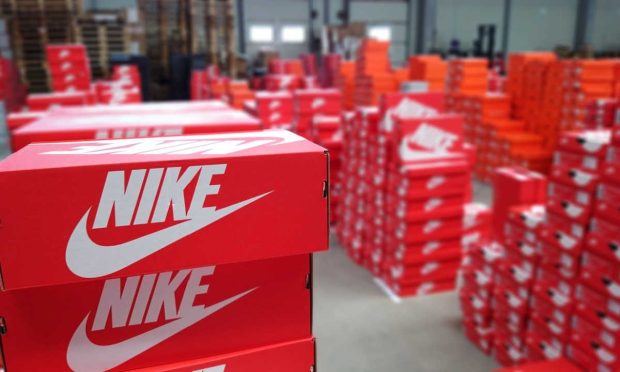
The continued buildout of Nike’s digital channels and direct-to-consumer (D2C) sales, as well as the brand’s inextricable ties to an ecosystem, are helping buck pressures on discretionary spending.
The company reported fiscal first-quarter earnings results last week that showed Nike Direct revenues reached $5.4 billion, up 6% from last year’s levels. Direct sales now represent about 41% of the consolidated top line, an increase from the mid-teens percentage about a decade ago.
None of this is to say the wholesale business has gone by the wayside, as retail sales grew high single-digits to low double-digits, depending on the market — and overall fiscal first-quarter sales were up 2% year on year.
There have been re-instatements of retail partnerships, further cementing Nike’s brick-and-mortar reach. For example, as of November, Nike offerings will be available at Designer Shoe Warehouse. The company also renewed its retail pacts with Macy’s and with Foot Locker.
The omnichannel efforts have borne fruit. As Chief Financial Officer Matthew Friend noted on the call, user engagement with the Direct business “is up double digits versus the prior year, with increasing order values.”
And, as he said elsewhere on the call, “we are seeing consumers spending more time in brick-and-mortar locations. But 90% of their shopping journeys are starting with digital.”
He told analysts that Nike Direct will “continue to lead our growth throughout the remainder of this fiscal year.”
Management also noted on the call that inventory dollars were down 10% versus the prior year, as units were lower by double-digit percentage points versus the year-ago period.
Nike’s numbers run a bit contrary to PYMNTS Intelligence, which found that as many as 60% of consumers have cut back their spending on clothing and accessories. And 40% of that roster have traded down to less expensive brands.
As for the digital shift, separate PYMNTS Intelligence, in collaboration with Amazon Web Services (AWS), showed the growing intent to use digital channels to browse for and purchase apparel. The report “Digital Payments Takeover: Catching the Coming eCommerce Wave” found that the average value of a single online retail order stood at $129. The data showed that roughly 38% of consumers intended to boost their use of digital channels to make purchases of apparel and clothing in the year ahead, and roughly a third of consumers intended to do so, specifically, within the sports/hobby category.
The holiday shopping season looms and may be a decisive factor in whether these trends have staying power. Separate PYMNTS Intelligence noted that the holiday season winds up creating stress for two-thirds of consumers, and November and December are stressful months as holidays and celebrations pressure the wallets of more than half of consumers.